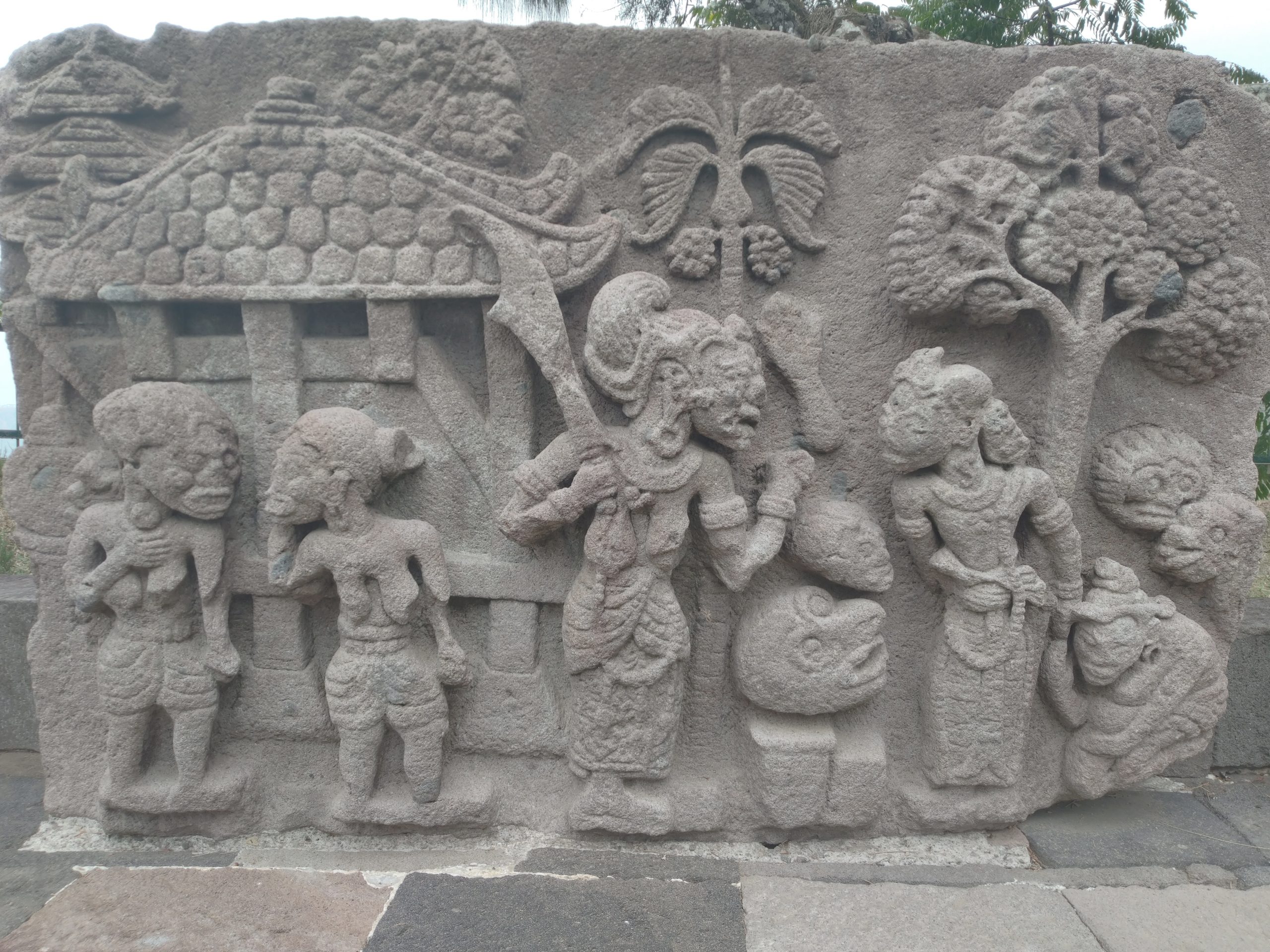By: Abdul Rosyidi
Several times, Umah Ramah and NAPIESV visited Sukuh Temple which is located on the western slope of Mount Lawu. At an altitude of 910 meters above sea level, to be precise in Mberjo Village, Ngargoyoso District, Karanganyar Regency, Central Java. This temple is often referred to as The Last Temple. It is called that because after the collapse of Majapahit in the XV century there were no more temples being built.
This temple is considered by researchers not in accordance with the standard of making temples or holy places according to Hindu teachings. Generally Hindu temples face East, Sukuh temple faces West. Even Hindu temples usually adopt a symmetrical space with the center as the holiest place, but Sukuh Temple adheres to megalithic architecture, stepped terraces. Sukuh has three terraces.
Some observers say that there was a cult return to local Javanese teachings in the late Majapahit empire. In the reliefs at Sukuh Temple, for example, an original Javanese story appears about Bima, as a cult figure, as an incarnation of Shiva, the Creator. Bima’s cult is related to his masculine side which is highlighted roughly, with naturalist icons, not subtle symbolic reliefs. This is because Sukuh is in the midst of farmers with a different understanding from the intellectuals in the palace. It is easier for people in rural areas to understand rough, naturalistic drawings than symbolic ones.
Researchers believe that in Java in the 15th century, there was a wave of returning to local teachings when the Hindu Majapahit Kingdom was experiencing a crisis and was eventually overthrown by Demak. According to Denys Lombard, these local teachings were brought by religious people (receipts) who left the Majapahit palace. They then gave rise to a new cult of Bhima as an incarnation of Shiva. In the reliefs at Sukuh Temple, many stories about Bhima, the plays of Bhimagulung and Bhimaswarga and the masculine figure of Bhima are thus highlighted.
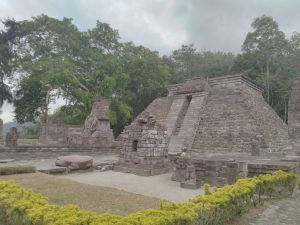
Apart from the play Bima, which is no less important, the reliefs in this temple also tell about the play Garudeya and Sudhamala. Garudeya tells the story of Garuda who tries to find amarta water (water of life) to release the curse that befell his mother. Meanwhile, Sudhamala’s play tells the story of Durga’s radiation asking Sadewa to release her curse. The Raksasi (giant) Durga is actually Dewi Uma who was cursed to become a Raksasi (giant). The story of Durga as a raksasi only exists outside the palace. Inside the palace, Durga is always told as a goddess.
Through these two stories we record a symbolic story of purification and liberation. Sukuh Temple is believed to be a holy place for rituals. Several pieces of evidence confirm this. For example, the lingga-yoni (phallus-vulva) relief at the first gate. Besides functioning as “suwuk” (cleaner), this relief also serves to “ngruwat” (purify) anyone who enters the temple.
The Sudhamala relief tells of Sadewa purifying (ngruwat) the Durga from lust related to love. Garudeya relief depicting Garuda liberating (ngruwat) his mother, the goddess Winata, from slavery. The many statues and reliefs related to symbols of sexuality (see the very sensual Bima statue, the phallic statue, lingga-yoni relief, and horseshoe relief) also show that this temple holds cultural codes that are very important for understanding human sexual desires and sexuality.
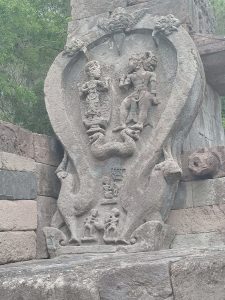
Sudhamala
Sudhamala comes from “cuddha-mala” which means “clean from the stains of sin”, also means “release”, which in wayang is called “ruwat“. P.J. Zoetmulder in the Old Javanese-Indonesian Dictionary, mentions the word “suda” or “suddha” comes from Sanskrit which means “clean”, “pure”, “bright”, “shiny”, “white”, “no defects”, “blameless”, “true”, “correct”, “free from lust”. While the word “mala” also comes from Sanskrit which means “dirty”, “obscene”, “unclean” (physical and moral), “stain”, “injury”, “flaw”, “sin”. Although Sudhamala means liberation, release, or purification from impurities, more specifically, the impurities referred to are related to stains, lust, obscenity, and immorality. Symbols that point to sexuality.
From the story of Sudhamala, we can know better that the purification that was carried out was related to the mistakes of a god/goddess related to sexual relations and sexuality. Sudhamala’s story tells of Sadhewa, one of the twin warriors among the five Pandawa warriors, who succeeded in purifying (removing the curse) inside Dewi Uma, the wife of Bathara Guru. Dewi Uma was cursed by her husband, Bathara Guru (Syiwa) for having committed an unfaithful act with a boatman. The Goddess was cursed and transformed into a giant named Bathari Durga.
That said, Dewi Uma intended to meet her husband who was seriously ill. But distance separates them. Then because of her love, she forced herself to meet her husband. She also had to cross the river in order to meet him. However, to be able to cross the river, Dewi Uma had to use a boat (tambang). The boatman would not provide ferry services unless Dewi Uma agreed to have sexual intercourse with him. Dewi Uma is caught between sincere love and having to have an affair so she can meet her love. Dewi Uma finally agreed to have sex with the boatman. Even though she was forced to do so under the “threats” and “manipulation” of the boatman.
When the two of them met, her husband also cursed her for having “inappropriate” sexual relations, namely having sex without love; having to do with threats, coercion, and manipulation. From this we can also see that all beings, even gods and goddesses, are not free from the traps of sexual desire, and the confusion between love and lust. Interestingly, in Sudhamala’s story, the one who can release the curse is a human, namely Sadewa.
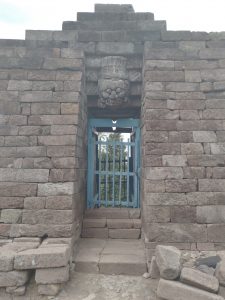
Kamasalah
To find out the natural way of thinking of the Indonesian people regarding sexuality, sexual desire and the problems that often arise, we can also look at Murwakala’s story. The story centers on Kahasilan, a giant born of unrestrained sexual desire. It is unwanted, springs from sexual desires that are misplaced, mistimed, by coercion, violence, and arbitrariness.
Once upon a time, Bathara Guru forced himself to have sex with Dewi Uma, his wife, on the back of Lembu Andini, while they were taking a walk in the evening, at dusk. Dewi Uma refused, but his lust was unstoppable. The semen that spurted from Batara Guru plunged into the ocean. When the two gods and goddesses returned to heaven, Batara Guru’s semen became a giant creature as big as a mountain: Kamasalah.
Kamasalah’s birth was a problem. In the ocean, he made a mess, fires appeared everywhere, sea animals died. Batara Baruna also reported the incident to Batara Guru. Batara Guru knew that it was Kamasalah’s doing, and he also knew that Kamasalah was his son. After meeting with Batara Guru, Kamasalah was given the name Batara Kala, Batara who was born at an inopportune time (kala).
Even after meeting his father, Batara Kala still brought problems. He eats children who are misbehaving (Sukerta) and misbehaving (Sengkala). This is where the Javanese ritual of ruwat comes from, to release a human child from the wrong state of being targeted by Batara Kala.
Understanding mythology
Many people do not believe in mitos or mythology because of their historical inaccuracies. Mitos is considered no longer useful for our today’s life. In fact, we can take hidden meanings from mitos, even those that were often misunderstood before. Mitos is absorbed from the English language ‘myth’, which comes from the Greek ‘mythos’, which means “story”.
Myth is not an ordinary story. It describes crucial human problems, values, morals, virtue, love, or even tragedy. Myth is not a realistic painting, but surreal. As a composition, myth has limitations. Following the weakness of its creator. The weakness of the myth is in actuality. So often myths are misunderstood, considered the same as hoaxes or mis-information.
According to John L. Esposito, in the religious tradition, myths actually describe the deepest and truest truths about life. Truth is expressed through grand stories about creation and destiny, not by abstract theories or rigid concepts.
This is what makes the religious language in the holy books symbolic. Religious-symbolic language, according to Esposito, usually takes two forms, analogy or negation. When something that could not be said before is told with words or concepts that are more familiar, then this is called an analogy.
Describing God as having human qualities such as loving and compassionate, seeing and hearing, is an example of an analogy. Crucial themes discussed by the mutakallimin such as that Allah has hands, sits on a chair, and so on are also included in this type of symbolic language. The mystical tradition prefers a negation approach in explaining God. Instead of being described by known attributes, God is known as neither this nor that. Because there really is nothing like it at all (laitsa kamitslihi syai’un).
The story of Prophet Ibrahim a.s. those who seek God are explained in the Qur’an in a story full of negation. Al-An’am 76-79, tells of Abraham’s search and found that God is not a star, not the moon, and not the sun.
These two ways of understanding, analogy and negation, are not contradictory because in analogy there is always negation. Often we describe God with something but at the same time say that He is not like that. Like that but not like that.
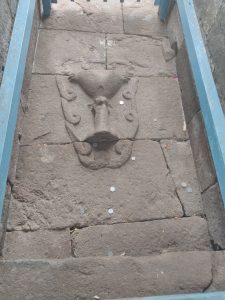
Few lessons
From the first, sexual desire is not easy for humans to understand. These desires are beyond human control. It is even considered a force and drive that comes from non-humans. Derived from evil and dirty demons. Instead of blaming desire, Eastern traditions describe sexual desire more neutrally, placing it within the corridors of elusive myths, riddles, and surreal language that is sometimes paradoxical. However, from mythological stories such as Sudhamala and Kamalasah, we can develop a somewhat richer depiction of sexuality and sexual desire. More or less is as follows:
First, sexual desire is an unavoidable nature. All living beings necessarily have sexual desires. There is not a single living being that does not have it. Even in the mythologies of the Indonesian Archipelago and throughout the world, even superhuman divine beings are inevitably trapped by this one desire.
Second, no human is pure from sexual desire. Certain people may claim to be free from shackled human traits, such as the sexual urge. However, the basis of humanity cannot be dismissed so that no intelligent people, people who are considered holy, or people who are chosen, can be free from their sexuality.
Likewise we can learn, when sexual violence occurs, morality cannot be measured from the image of one’s piety. Morality is seen from whether a person can have sexual relations without causing suffering to others or not, not on how pious he is ritually, whether in social image, or clever in religious knowledge.
Third, sexual relations must be carried out properly without coercion and violence. This relationship is important to do with the willingness of both parties. The absence of consent for both of them will cause consequences that are not light which are equivalent to a curse, an impact that is not visible, but has tremendous consequences for humanity.
Fourth, there is a difference between love and sexual desire. People often equate the meaning between love and sexual desire. Even though love has a deeper meaning and is not limited to sexual partners. Sincere love comes from the heart and is not limited to form and time. In contrast to sexual desire which is only related to the impingement of libido and is egotistical. Love is very universal while sexual desire is very egoistic. A good sexual relationship is not only in the form of sexual desire but also love in it. However, life’s problems are always present in complexity, where the two of them, between love and sexual desire cannot be distinguished, are often related, and cannot be simply avoided.
Fifth, problems due to wrong sexual relations can be returned to normal conditions. However, the settlement process needs to be done by unraveling the feelings within yourself first. It is very important to be yourself and free from the shackles that bind you first to be able to understand what happened. Here it is important to emphasize more comprehensive sexuality education, so that everyone can talk about sexuality without taboos and is free from fear of certain doctrines.
Sixth, in an effort to restore the humanity of those involved in sexual violence as before, empathy, a willingness to feel, and involvement in the social sphere are needed, so that there is continuity between the individual and the collective. Moral judgment of people involved in sexual violence will not solve the problem of sexual violence and will even strengthen the rape culture in society. Sexual violence or problems related to sexual misconduct will not be solved by individuals, but by the collective efforts of the whole society.
Thus would the description of the mythologies related to sexuality exist in the Indonesian Archipelago. The stories are full of meanings that we must continue to articulate so that they are always contextual with the challenges of the times. In the context of that contextualization, Umah Ramah and NAPIESV then created the Sudhamala School, which is an effort to provide sexuality education and prevention of sexual violence based on Islamic teachings and local wisdom in the archipelago.***
This article was translated by Napol Riel.
